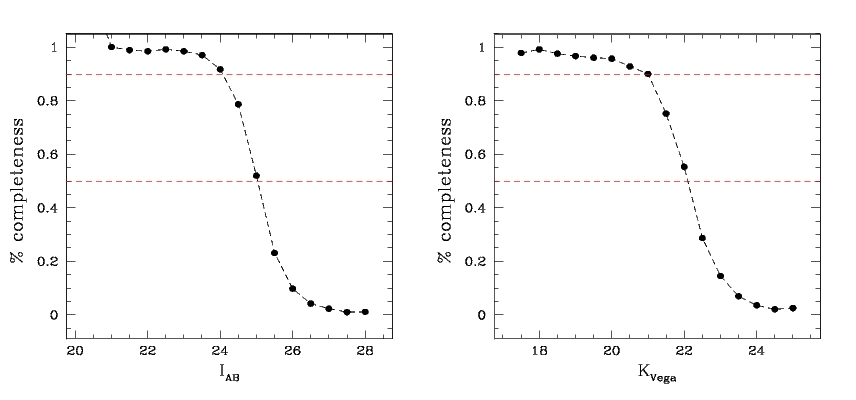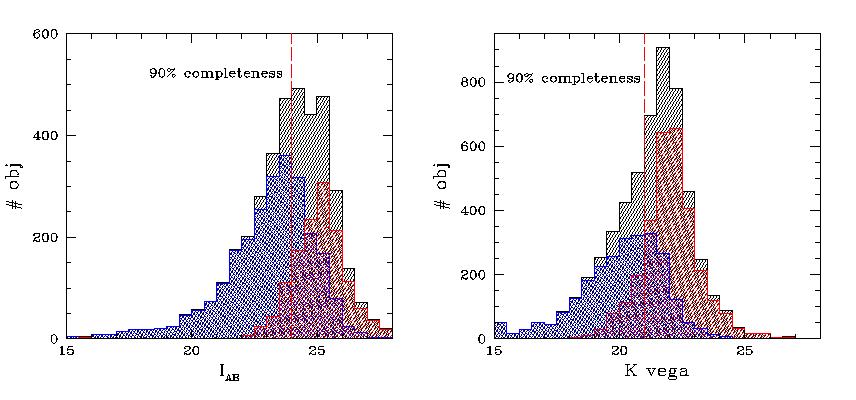
--1 Adding an
artificial star image FWHM = 0".8 arcsecs to the
real image (K or I band) the following
completeness values are obtained:

From these two
plots, 90% completeness values are I_AB = 24.0 and K_Vega = 21.0 .
It should be remembered though that at K_Vega > 21.00 for this field
contamination
rate becomes higher than 10%, suggesting that the scientific analysis
for the K-band
data in this field should be limited to K_Vega < 21.00.
--2 Number of objects in
SExtractor catalogues (in overlapping area, 89.3 sq arcmins,
limits defind here):
I-band --> 4039 in total,
1903 down to I_AB < 24.0 .
K-band --> 5886 in total, 2135
down to K_Vega < 21.0 .
Pairing according to Ra and Dec between the two catalogues results in
2544 objects
in common, 1495 unpaired I-band objects,
3342 unpaired K-band objects.
--3 Magnitude distribution of
paired(blue)/unpaired(red)/total(grey) objects in the
I-band and K-band catalogues
:
I-band
K-band

One can see that down to the respective 90% completeness limit the
percentage
of paired objects is
slightly higher for I-band than for K-band:
I-band --> @ I_AB < 24.0 :
1710 are paired (90%) and 193 are unpaired (10%)
K-band --> @ K_Vega < 21.0: 1697 are paired
(79%) and 438 are unpaired (21%)
A visual inspection of the 438 bright (K_Vega < 21.0), unpaired,
K-band objects
shows that most of these are
bona-fide objects with no visible I-band counterparts.
(click here
for an image gallery of interesting cases). Down to K_Vega <
20.75 (78 objs)
the percentage of reliable
K-band unpaired detections is as high as 90%.
--4 Recipe for adding the K-band info into the database.
We have three different cases:
a -- 2544 paired objects: for them the K-band info should
simply be added in
the database. Here is the file
that contains the IDs of these objects in
the database and their full K-band Sextractor information (usual format).
The K-band photometric info contained in this file should go into the
database.
b -- 1495 unpaired I-band objects: for them in the database we
should
put Kmag=99.00, meaning no K-band detection. Here is the file that
contains the IDs of these objects in the database.
Page written: May 11 2004